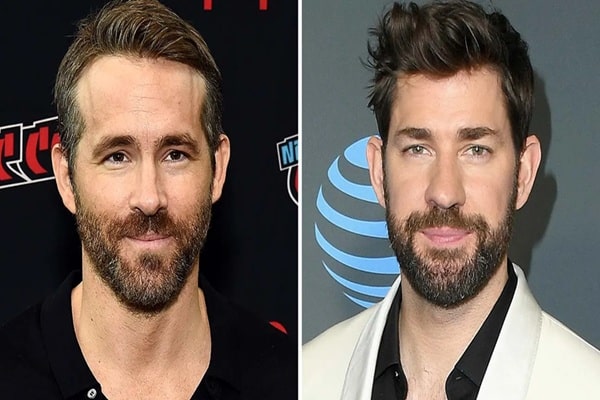
When IF first hit theaters, it wasn’t exactly the blockbuster Paramount had hoped for. Despite the star power of Ryan Reynolds and John Krasinski, the movie’s box office numbers didn’t set the world on fire. But here’s the twist — once IF landed on Netflix, it quietly transformed into one of the platform’s biggest family-friendly hits of the year.
So, how did a movie that underperformed in theaters become a top streaming success story? Let’s break down the journey — from its rocky theatrical debut to its heartwarming redemption on Netflix.
The Big Picture: How “IF” Started Off
Released in May 2024 by Paramount Pictures, IF marked a major creative shift for director John Krasinski. After terrifying audiences with A Quiet Place, he went in the complete opposite direction — crafting a touching, imaginative family comedy about childhood wonder and invisible friends.
The story follows 12-year-old Bea (played by Cailey Fleming), a smart and curious girl who discovers she can see people’s imaginary friends — or “IFs.” With the help of her neighbor Cal (Ryan Reynolds), who shares this unique gift, Bea sets out to reunite forgotten imaginary friends with the children who once created them.
It’s an idea that feels like Pixar meets live-action — colorful, emotional, and deeply nostalgic. Even Ryan Reynolds described it as a “live-action Pixar film,” and honestly, that’s the best way to sum it up.
Despite its warm heart and family appeal, IF didn’t exactly soar at the box office. But as we’ll see, this was just the beginning of its comeback story.
Star Power and Big Expectations
When you see the names Ryan Reynolds and John Krasinski together, you instantly expect something special. Krasinski didn’t just direct and write IF — he also appeared as Bea’s father, while Reynolds brought his signature wit and warmth to the role of Cal.
And the voice cast? Absolutely stacked. Steve Carell, Phoebe Waller-Bridge, Emily Blunt, Matt Damon, Bradley Cooper, George Clooney, and even Blake Lively lent their voices to the film’s imaginary friends.
With a $110 million budget and major studio backing, expectations were sky-high. Early tracking suggested a potential $40 million opening weekend — a strong start for an original, family-friendly film.
But then came reality.
The Box Office Blues
Despite solid early buzz, IF opened to a softer-than-expected $33 million domestically and around $55 million globally. Even though the numbers climbed to $160 million worldwide by its fourth weekend, it wasn’t enough to cover the marketing costs and production budget.
Critics didn’t help much either. IF scored only 49% on Rotten Tomatoes, with reviewers calling it “sweet but scattered” and “overly sentimental.”
However, audiences felt differently. The film earned an A CinemaScore and an 87% audience rating — a huge gap that showed families loved it even if critics didn’t.
The real issue wasn’t the movie itself — it was timing. IF released during a crowded lineup, competing with The Garfield Movie and Furiosa: A Mad Max Saga. And without a major tentpole like a Marvel film to draw crowds, overall theater attendance was down.
In short, IF didn’t fail because it wasn’t good — it just hit theaters at the wrong time.
A Second Chance: Netflix to the Rescue
Here’s where things get interesting. When IF made its Netflix debut, something magical happened. The film shot up the charts, landing in Netflix’s global Top 10 and becoming one of the most-watched movies worldwide between March 10–16.
It racked up 5.7 million views and 9.8 million hours watched in a single week — outperforming popular titles like The Boss Baby and The Croods.
In several countries, including Venezuela, Jamaica, and Ecuador, IF even reached the top 5 spots.
It was clear: audiences who skipped the theater were ready to fall in love with IF from the comfort of their homes.
Why “IF” Worked Better on Streaming
So why did IF find such a big audience on Netflix when it struggled in theaters?
Because IF is the kind of cozy, heartfelt movie families love to watch together — and streaming makes that easier than ever.
No expensive theater tickets, no travel, no scheduling. Just the couch, popcorn, and a movie full of warmth and imagination.
Family films tend to perform better in this format. They don’t rely on explosive visuals or massive opening weekends — they thrive on word of mouth. And once IF hit Netflix, viewers started recommending it to friends and sharing emotional reactions online.
One viewer summed it up perfectly: “I didn’t expect to cry watching this. It hit me harder than I thought.”
The Emotional Heart of “IF”
What makes IF special isn’t just its clever premise — it’s the emotional honesty behind it.
At its core, the movie is about coping with loss and rediscovering imagination. Bea, the main character, has lost her mother and is watching her father battle illness. Her ability to see imaginary friends becomes a metaphor for healing — reminding both kids and adults that imagination can be a source of comfort in hard times.
John Krasinski handles these themes delicately. The story doesn’t lecture; it gently reminds us how creativity and hope can help us face fear, loneliness, and grief.
Many compared its emotional impact to Pixar classics like Up or Inside Out. It’s a film that sneaks up on you — you think you’re in for a light comedy, and suddenly you’re tearing up halfway through.
Critics vs. Audiences: Two Different Worlds
One of the most fascinating things about IF is how differently critics and regular viewers saw it.
Critics found it uneven, but audiences called it “beautiful,” “wholesome,” and “emotionally healing.”
That 38-point gap between Rotten Tomatoes critic and audience scores tells you everything — this was a movie made for families, not film festivals.
And that’s exactly why it thrived on Netflix. When people watch with their kids or loved ones, they’re not judging screenplay structure — they’re connecting with the heart of the story.
A Redemption Story for Everyone Involved
For Ryan Reynolds, IF marked yet another win in his long line of streaming hits. He’s now the only actor with three films in Netflix’s All-Time Top 10 — Red Notice, The Adam Project, and 6 Underground.
For Krasinski, it was proof that he could shift genres and still connect emotionally with audiences. His move from horror to heartfelt family storytelling showed just how versatile he is as a filmmaker.
And for Paramount, IF became a lesson in patience. Sometimes, a film just needs the right platform to reach the right audience.
Also Read : What is Trisha Paytas’ Net Worth?
Streaming Success Redefines What “Winning” Means
The success of IF on Netflix highlights a larger trend — streaming is rewriting the rules of movie success.
Once upon a time, a film’s fate depended entirely on its opening weekend. Now, a movie can find new life months later, thanks to streaming platforms that reach millions globally.
IF is living proof that theatrical numbers aren’t the final word anymore. A movie with a good heart, strong performances, and universal themes can always find its audience — even if it takes a little longer.
Final Thoughts: The True Magic of “IF”
At the end of the day, IF did something that numbers can’t fully capture — it touched people.
It reminded us to nurture our inner child, to imagine again, and to never forget the “imaginary friends” that once made our world brighter.
That’s the real success story here — not the box office totals, but the way families, kids, and even adults connected with its message once it reached their homes.
As far as streaming redemption stories go, IF just might be one of the best in recent memory.
Because in a world full of sequels and superheroes, sometimes all you need is a simple story about hope, heart, and the power of imagination.


